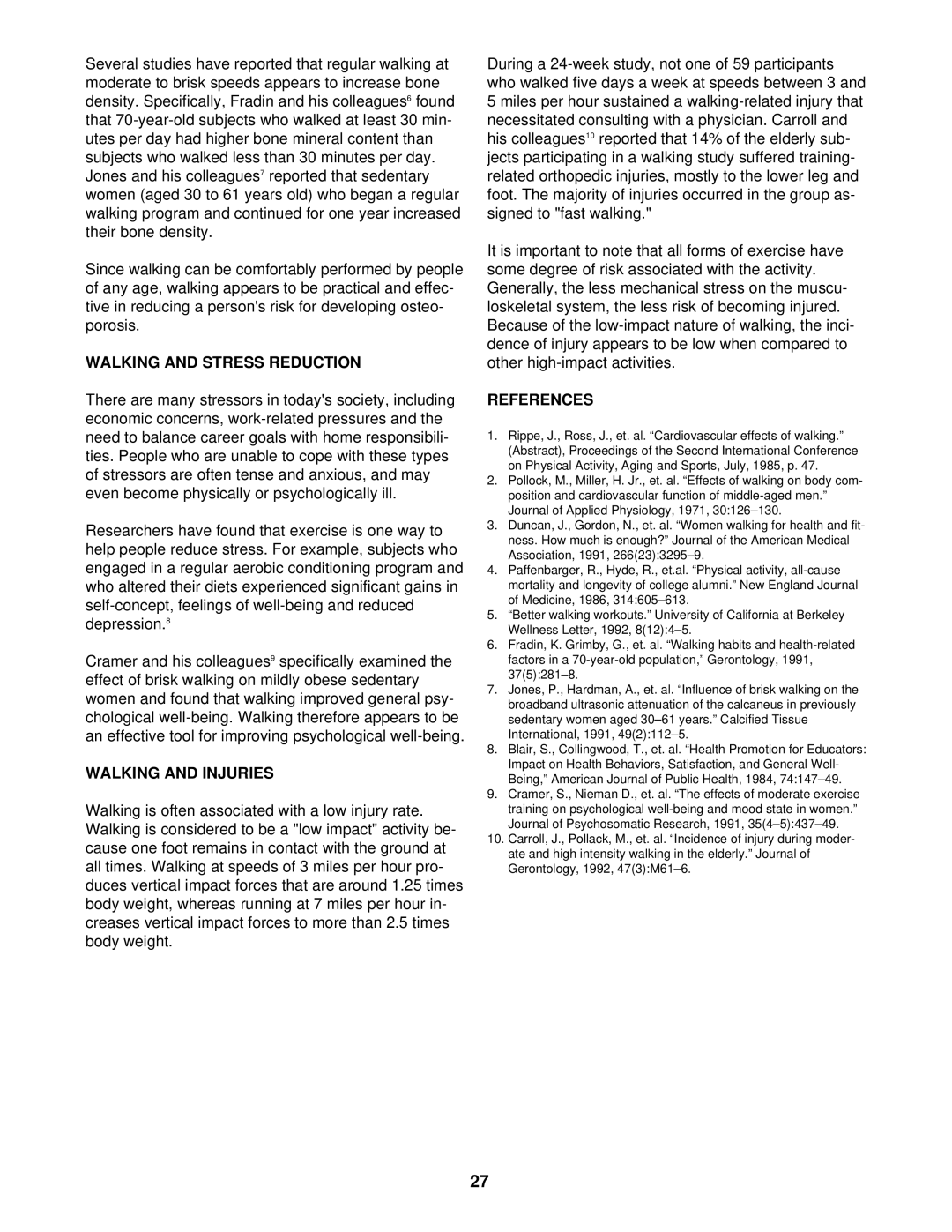Several studies have reported that regular walking at moderate to brisk speeds appears to increase bone density. Specifically, Fradin and his colleagues6 found that
Since walking can be comfortably performed by people of any age, walking appears to be practical and effec- tive in reducing a person's risk for developing osteo- porosis.
WALKING AND STRESS REDUCTION
There are many stressors in today's society, including economic concerns,
Researchers have found that exercise is one way to help people reduce stress. For example, subjects who engaged in a regular aerobic conditioning program and who altered their diets experienced significant gains in
Cramer and his colleagues9 specifically examined the effect of brisk walking on mildly obese sedentary women and found that walking improved general psy- chological
WALKING AND INJURIES
Walking is often associated with a low injury rate. Walking is considered to be a "low impact" activity be- cause one foot remains in contact with the ground at all times. Walking at speeds of 3 miles per hour pro- duces vertical impact forces that are around 1.25 times body weight, whereas running at 7 miles per hour in- creases vertical impact forces to more than 2.5 times body weight.
During a
It is important to note that all forms of exercise have some degree of risk associated with the activity. Generally, the less mechanical stress on the muscu- loskeletal system, the less risk of becoming injured. Because of the
REFERENCES
1.Rippe, J., Ross, J., et. al. “Cardiovascular effects of walking.” (Abstract), Proceedings of the Second International Conference on Physical Activity, Aging and Sports, July, 1985, p. 47.
2.Pollock, M., Miller, H. Jr., et. al. “Effects of walking on body com- position and cardiovascular function of
3.Duncan, J., Gordon, N., et. al. “Women walking for health and fit- ness. How much is enough?” Journal of the American Medical Association, 1991,
4.Paffenbarger, R., Hyde, R., et.al. “Physical activity,
5.“Better walking workouts.” University of California at Berkeley Wellness Letter, 1992,
6.Fradin, K. Grimby, G., et. al. “Walking habits and
7.Jones, P., Hardman, A., et. al. “Influence of brisk walking on the broadband ultrasonic attenuation of the calcaneus in previously sedentary women aged
8.Blair, S., Collingwood, T., et. al. “Health Promotion for Educators: Impact on Health Behaviors, Satisfaction, and General Well- Being,” American Journal of Public Health, 1984,
9.Cramer, S., Nieman D., et. al. “The effects of moderate exercise training on psychological
10.Carroll, J., Pollack, M., et. al. “Incidence of injury during moder- ate and high intensity walking in the elderly.” Journal of Gerontology, 1992,
27
